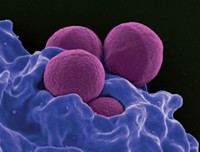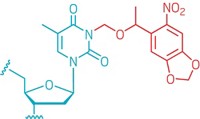Advertisement
Grab your lab coat. Let's get started
Welcome!
Welcome!
Create an account below to get 6 C&EN articles per month, receive newsletters and more - all free.
It seems this is your first time logging in online. Please enter the following information to continue.
As an ACS member you automatically get access to this site. All we need is few more details to create your reading experience.
Not you? Sign in with a different account.
Not you? Sign in with a different account.
ERROR 1
ERROR 1
ERROR 2
ERROR 2
ERROR 2
ERROR 2
ERROR 2
Password and Confirm password must match.
If you have an ACS member number, please enter it here so we can link this account to your membership. (optional)
ERROR 2
ACS values your privacy. By submitting your information, you are gaining access to C&EN and subscribing to our weekly newsletter. We use the information you provide to make your reading experience better, and we will never sell your data to third party members.
Biological Chemistry
Small Molecules Light Up Gene Expression
Technique may aid study of gene expression patterns in cells and tissues
by Stuart A. Borman
January 25, 2010
| A version of this story appeared in
Volume 88, Issue 4
The first small molecules that induce localized light-activated gene expression in large proportions of treated living cells are now available (ACS Chem. Biol., DOI: 10.1021/cb9002305). Scientists have developed several small molecules that induce cellular gene expression in response to light. The induced gene expression can then be detected by light microscopy. But the rate of induced gene-expression has been limited, with detectable responses in only a small fraction of treated cells, and no biological responses to the induced expression have been demonstrated. Now, Daniel J. Sauers and coworkers in John T. Koh’s group at the University of Delaware report that the tetracycline-based system RetroTET-ART, combined with a photocaged doxycycline, generates light-activated gene expression in about 85% of treated cells. In addition, the system can be used to direct the migration of cocultured cells in response to induced expression of attractive and repulsive molecules. The new gene-expression control and monitoring technique could be useful for studying expressed proteins that guide axonal development and for engineering artificial tissues, among other applications.




Join the conversation
Contact the reporter
Submit a Letter to the Editor for publication
Engage with us on Twitter